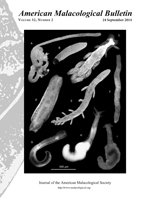The terrestrial, ellobioid taxon, Carychiidae provides an excellent case study for testing integrative taxonomy and addressing the plethora of historical species designations based on vague morphological characters. Since the Carychiidae are ephemeral, hermaphroditic microgastropods (< 2mm) inhabiting permanently moist aphotic zones of epigean (Carychium O. F. Müller, 1773) and subterranean habitats (eutroglobiont Zospeum Bourguignat, 1856), studies investigating their reproductive system for species delimitation have been futile. Many carychiid species designations were established during the mid-18th to 20th Century heydays of species discovery. Naturalists either split (“splitters”) species by recognizing them according to trivial differences in shell morphology or grouped them (“lumpers”) based upon common morphological traits. The concept of phenotypic variability was not considered or greatly underestimated in these species hypotheses. Although integration of DNA barcodes has since enabled a reliable identification and delineation of most of the traditional morphospecies, still many morphologically unrecognized evolutionary lineages have been found in apparently widespread and variable taxa. In a retrospective, morphometric approach (i.e., starting from genetically identified, DNA-barcoded material), historically established conchological characters of the outer shell of two European Carychium species, Carychium minimum O. F. Müller, 1774 and Carychium tridentatum (Risso ,1826), are investigated. Revealed was a continuum of intraspecific conchological variability, indicating wide areas of overlap between both taxa. The conventional practice of separating species based on shell morphology alone was sufficient for a qualitative species assignment (i.e., when characteristic phenotypes are observed). Molecular analyses, however, enabled a quantitative species assignment for sympatric populations, intermediate morphotypes and juveniles.
How to translate text using browser tools
1 September 2014
DNA Barcoding Cleans House Through the Carychiidae (Eupulmonata, Ellobioidea)
Alexander M. Weigand,
Adrienne Jochum,
Annette Klussmann-Kolb
ACCESS THE FULL ARTICLE
canonical discriminant analysis
cryptic evolutionary lineages
Integrative taxonomy
phenotypic variability
synonomies





